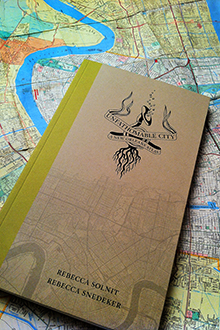Deep thoughts about New Orleans as the 'Unfathomable City'

A panel discussion at Tulane on Thursday (Feb. 6) is an outgrowth of the book Unfathomable City: A New Orleans Atlas. (Photo by Paula Burch-Celentano)
Rebecca Snedeker went to A Studio in the Woods in the fall of 2011 to work on an idea that became the nationally acclaimed Unfathomable City: A New Orleans Atlas, published last November. Now the Tulane University campus has an opportunity to hear a sediment scientist, a ceramic artist and a bass player talk about their views of the Crescent City at an event led by Snedeker.
“Bass Lines: Deep Sounds and Soils,” a spinoff from the book of maps, essays and artwork by Snedeker and Rebecca Solnit, is the theme for the event, set for 6 p.m. on Thursday (Feb. 6) in the Stone Auditorium at the Woldenberg Art Center.
It will feature points of view from ceramist Mapo Kinnord-Payton, an associate professor of art from Xavier University; renowned bass player James Singleton; and Christopher Esposito, a Tulane Ph.D. candidate in earth and environmental sciences.
Snedeker explains the program like this: “What do scientists and artists who play in the deep, with the bottoms of the spectrums, understand about the world and our city?” It will be a “conversation about sounds and soils, vibrations and foundations, measurement and improvisation.”
Thursday's event focuses on one of the book's 22 maps. Called “Bass Lines,” it shows sediment and soils along with references to “low sounds,” from locations of firework displays and riverboats to music history sites.
The event is cosponsored by the New Orleans Museum of Art in partnership with A Studio in the Woods, a Tulane program that is a live-in artists' retreat center. Snedeker, who also is a documentary filmmaker, held an Ebb and Flow Residency at the studio, which “is really about seeding an idea that germinates and comes to fruit later,” says Ama Rogan, its managing director. Unfathomable City “is a great example of that.”
Among the book's many collaborators were Tulane geographer Rich Campanella and Joel Dinerstein, associate professor of English.
